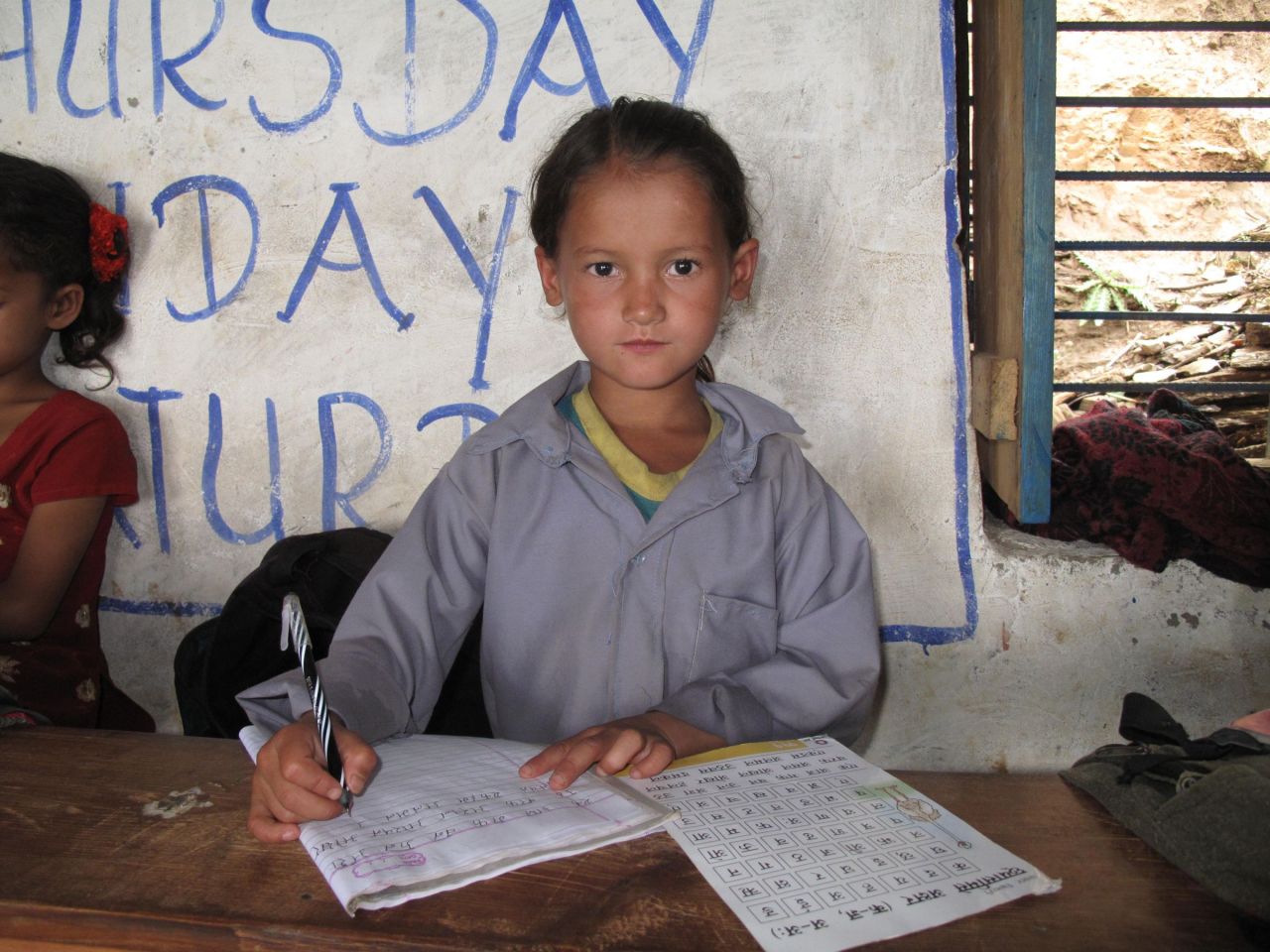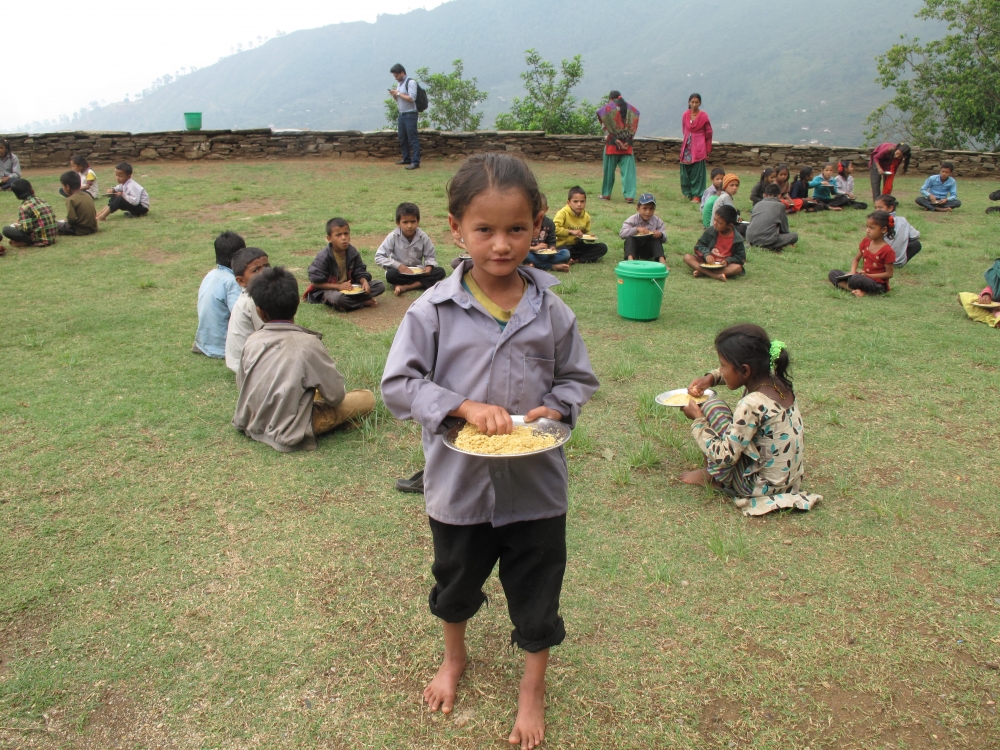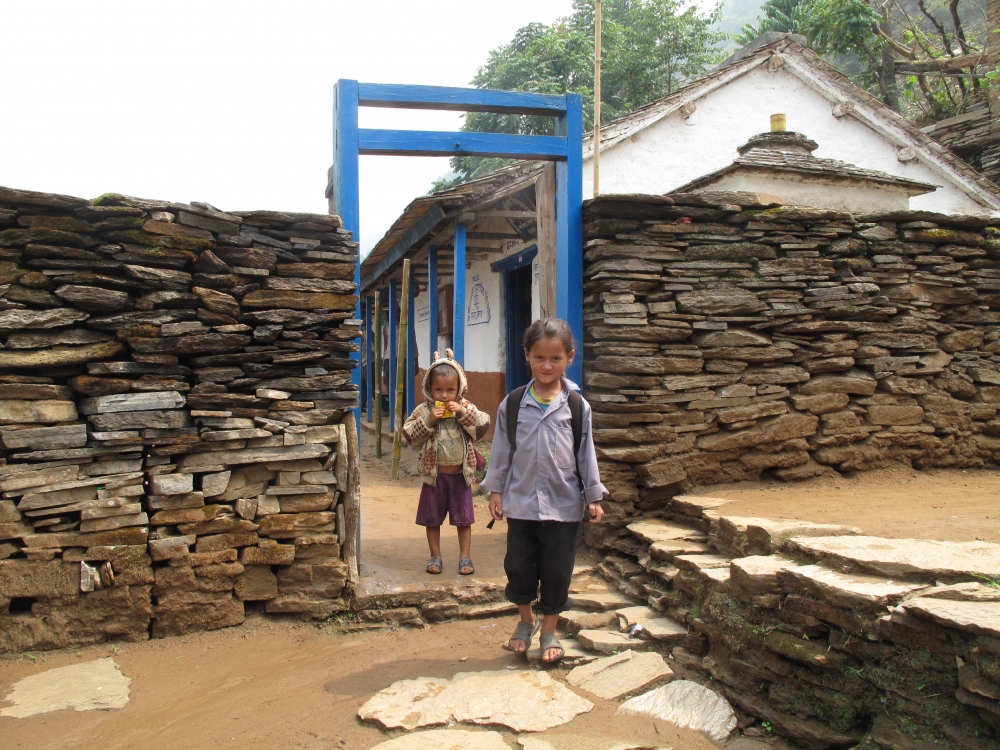Growing up as a girl in a poor rural village in Nepal involves many challenges. For children like Smriti, benefiting from regular school meals means getting nutritious meals and staying in school are two fewer challenges to worry about.
Seven year old Smriti walks an hour each way to get to school every day. For Smriti and her friends who make the long journey from a small village in mid-western Nepal together, Janta Primary School is not just a school, but a place that can help them fulfill their hopes and dreams. As Smriti says: “I go to school to get an education, so that when I grow up, I can be a teacher.â€

Poverty and food insecurity are rampant in Smriti’s district of Dailekh, as a result of high food prices and a series of natural disasters that have left people struggling to cope. Vulnerable families are forced to skip meals or sell valuable assets in order to buy food. The literacy rate, at 52 percent, is far below the overall national literacy rate of 81 percent. Very often, parents struggle to feed their children and even send them to school.
In order to combat food insecurity and low literacy rates, Government of Nepal with supports from World Food Programme (WFP) started the National School Meals Programme in 1996 to enable struggling families to invest in basic primary education. The programme includes a special focus on girls, given that for many, even when they do get to go to school, household responsibilities mean getting any study done outside of school can be difficult. Educating children, particularly girls, is a fundamental step towards ensuring inclusive development, reducing poverty and discrimination, and improving food security.
The programme provides nutritious haluwa, made of fortified cereal, to over 190,000 school children across the country on a daily basis.

For the students of Janta Primary School, this meal helps ensure they have access to education. “I like the haluwa they give me at school. It tastes good, it fills my stomach, and keeps me from getting hungry throughout the day,†shares Smriti. “To increase and maintain regular attendance, we provide a nutritious mid-day meal to all our students that come to school. This food plays a pivotal role in attracting children to come to school,†explains Bhagawati Thapa, Principal of the school.
By Sikha Thapa
This article was originally published in wfp.org







